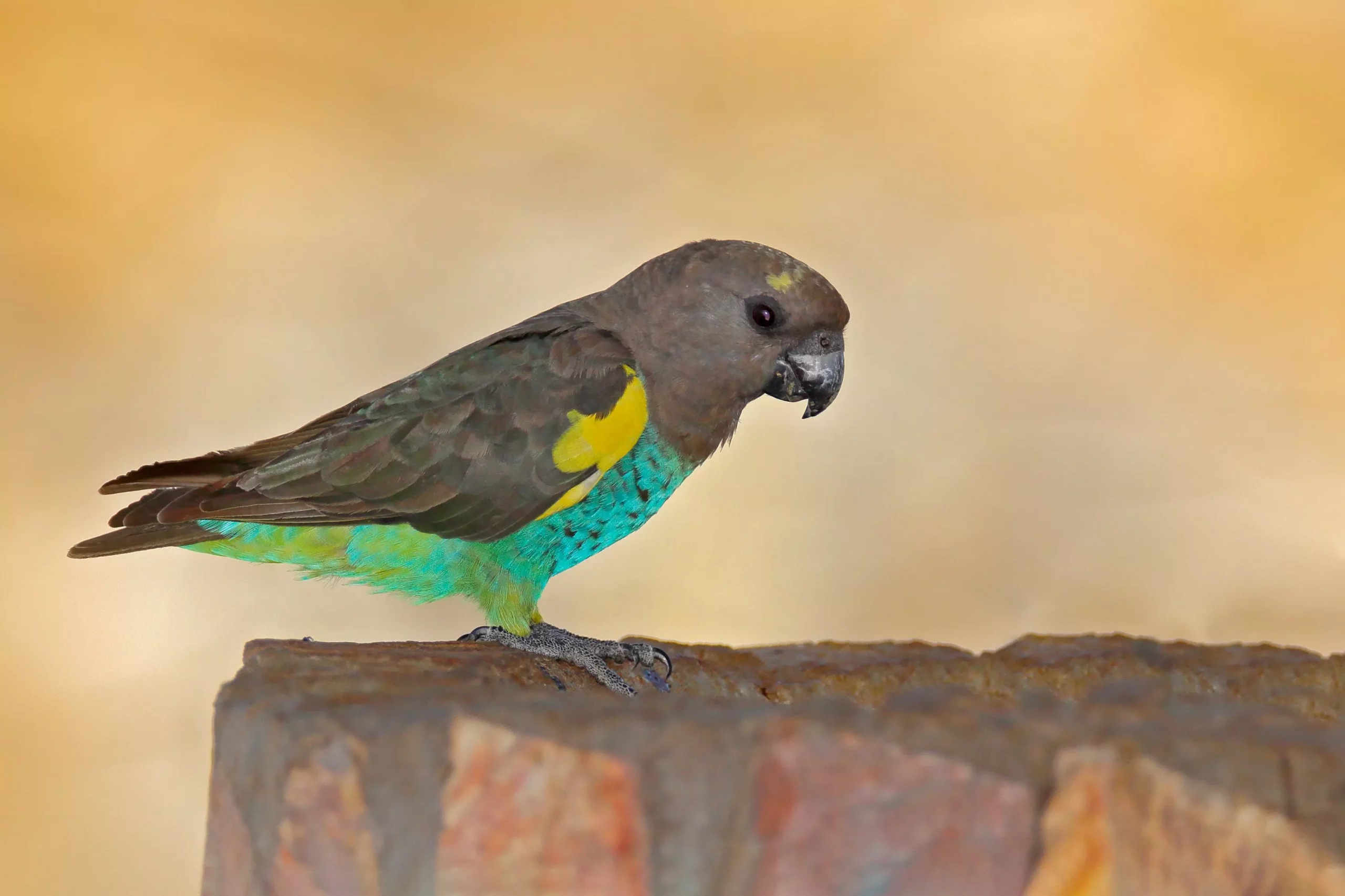Meyer’s parrots, scientifically known as Poicephalus meyeri, are delightful avian companions cherished by bird enthusiasts around the globe. These small yet charming birds, closely related to the Senegal parrot, have notable traits that make them particularly well-suited for urban living and as pets in compact spaces. This article seeks to provide in-depth insights into the history, characteristics, care, and lifestyle of Meyer’s parrots, allowing potential pet owners to make informed decisions.
Commonly referred to as brown parrots or Sudan brown parrots, Meyer’s parrots are native to the woodlands and grasslands of Africa. They are typically found in small flocks or pairs and are most populous in regions like Botswana. With a typical size of 8-9 inches and weighing around 4 ounces, these parrots thrive in habitats rich in vegetation. Ornithologist Bernhard Meyer first described these birds in 1827, which is how they acquired their name.
One of the characteristics that make Meyer’s parrots appealing pets is their calm and gentle temperament. Unlike some more boisterous parrot species, they are not overly demanding for attention, often exhibiting affectionate behavior without the constant need for engagement. They thrive on social interaction, enjoying gentle handling and cuddling, particularly with neck scratches.
Meyer’s parrots may not boast the vivid colors of some parrot species, but their earthy color palette has its charm. Their plumage features shades of green transitioning to turquoise, with greyish-black necks and heads, brown wings, and hints of yellow. Both males and females present similar looks, although various subspecies might show minor color variations.
Their appearance, combined with their engaging personality, creates a delightful blend that captivates bird enthusiasts. Although they are not avid talkers, they can learn a few words and mimic sounds from their environment. Most of their vocalizations consist of whistles, clicks, and environmental sounds rather than constant chatter, which can be a significant boon for those seeking quieter pets.
Caring for a Meyer’s parrot might be less demanding compared to larger parrot species, but they still require a thoughtful approach to their wellbeing. Providing a durable cage with plenty of space and appropriate bar strength is crucial when they’re not allowed free range in the house. They also thrive on ample out-of-cage time to explore, providing mental stimulation and physical exercise, which are paramount for their happiness.
Meyer’s parrots flourish in interactive environments. They appreciate toys—particularly those that they can shred—as well as regular human interaction. Preparing a balanced diet is also vital; although seed mixes are common, opting for high-quality pelleted bird food ensures a more nutritionally balanced diet. It’s crucial to supplement their diet with fresh fruits, vegetables, and the occasional cook treat, which can help maintain their dietary health.
While Meyer’s parrots are generally hardy, they can be prone to several health issues. Conditions like pneumonia, respiratory infections, and skin parasites often arise due to improper care or lack of clean living spaces. Regular veterinary visits are essential—not only for addressing potential health issues early but also for keeping up with preventive healthcare measures.
Maintaining a clean cage and a safe environment is crucial for preventing health issues. It’s essential to monitor their surroundings for drafts and temperature fluctuations since these can exacerbate respiratory problems. Maintaining a high standard of cleanliness, alongside a well-balanced diet, can significantly contribute to the longevity and life quality of Meyer’s parrots, who can live up to 20-30 years in a loving home.
Historically, breeding Meyer’s parrots in captivity posed challenges, making them less common as pets than their Senegal counterparts. Fortunately, advances in avian breeding practices have made them more accessible. Prospective pet owners can find Meyer’s parrots available for adoption through specialized bird rescues, avian veterinarians, and dedicated websites like PetFinder.com and RescueParrots.org.
Potential owners should do thorough research before selecting a pet parrot, ensuring that their choice aligns with their lifestyle and commitment level. The unique charm of a Meyer’s parrot offers an enriching experience filled with companionship and joy, making them a worthwhile consideration for avian enthusiasts seeking a lower-maintenance pet.

